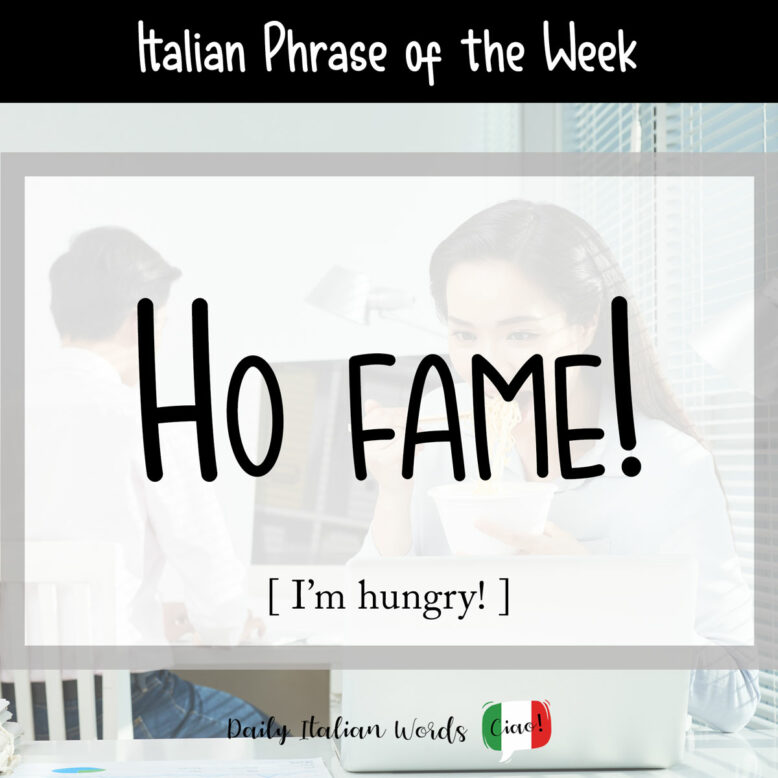A very important phrase for all those who enjoy a hearty Italian meal is Ho fame! which in Italian means I’m hungry!
It is made up of two components: the first person conjugation of the verb avere (to have) and the noun fame which translates as famine or hunger.
Ho (I have) + fame (hunger)

In contrast to English, Italian often uses avere (to have) plus a noun instead of essere (to be) plus an adjective when describing feelings and sensations. Below are a few extremely common examples that follow the same pattern as ho fame:
- Ho sete. (Literally: I have thirst.) = I am thirsty.
- Ho sonno. (Literally: I have sleepiness.) = I am sleepy.
- Ho caldo. (Literally: I have hotness.) = I am hot.
- Ho freddo. (Literally: I have coldness.) = I am cold.
- Ho paura. (Literally: I have fear.) = I am scared.
- Ho fretta. (Literally: I have haste.) = I am in a hurry.
Some other more expressive ways of saying I’m hungry in Italian include:
- Sto morendo di fame! = I’m dying of hunger!
- Che fame che ho! = How hungry I am!
- Sono affamato! = I’m starving!
- Ho una fame da lupi! = I have the hunger of wolves!
- Non ci vedo più dalla fame! = I can’t see from hunger!

Something many Italian children say along with or in the place of ho fame is voglio la pappa. This literally means I want the food, with pappa being the word children and their parents tend to use for food or meals.
Ho fame, mamma. Voglio la pappa!
I’m hungry, mommy! I want to eat!
Heather Broster is a graduate with honours in linguistics from the University of Western Ontario. She is an aspiring polyglot, proficient in English and Italian, as well as Japanese, Welsh, and French to varying degrees of fluency. Originally from Toronto, Heather has resided in various countries, notably Italy for a period of six years. Her primary focus lies in the fields of language acquisition, education, and bilingual instruction.


